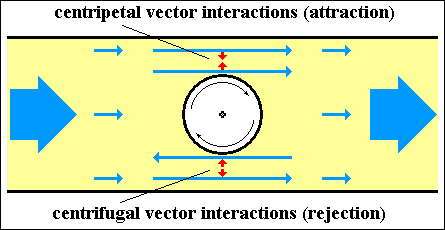The
hydrodynamic paradox
In vectorial interpreting, the hydrodynamic paradox it has a logical explanation.
On the reduced diameter portion of the cylinder, increasing the speed
of flow, polarises the vectors of the fluid and form the vector currents.
Currents with the same sense, generates centripetal vector interactions.
The interaction accelerates the vector currents , from periphery to the
center - "the depression"
It's the same phenomenon as at the electric arc, the quality of orthogonal
of the vectors.




